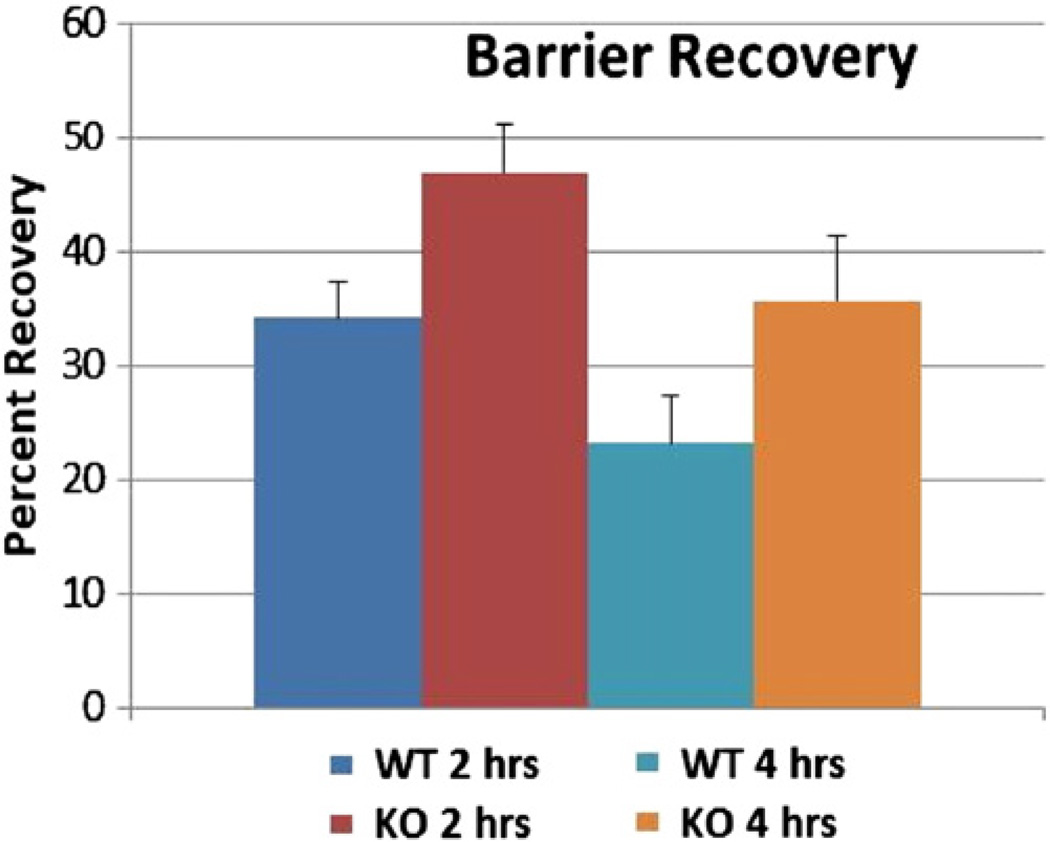Fig. 3.
Barrier Recovery is delayed at 2 but not 4 h in sPLA2 IIF−/− Mice. 3 month old sPLA2−/− mice and their normal littermates underwent barrier perturbation using tape-stripping. Basal epidermal permeability barrier function was assessed by measuring transepidermal water loss (TEWL) using TM300 connected to MPA5 (C&K, Cologne, Germany). For barrier recovery, TEWL was measured using an electrolytic water analyzer (Meeco, Warrington, PA) at 2 and 4 h after tape stripping. A 10-fold increase in TEWL was used as an indicator that the barrier had been perturbed. Percent barrier recovery at 2 and 4 h was calculated as described earlier (Man et al 2011). sPLA2−/− mice and 8 wild-type control mice. Barrier recovery was significantly slower in the sPLA2−/− mice at 2 h (p = 0.04). While barrier recovery still lagged at 4 h for sPLA2−/− mice, this difference was not significant (p = 0.12). N = 6 mice.

